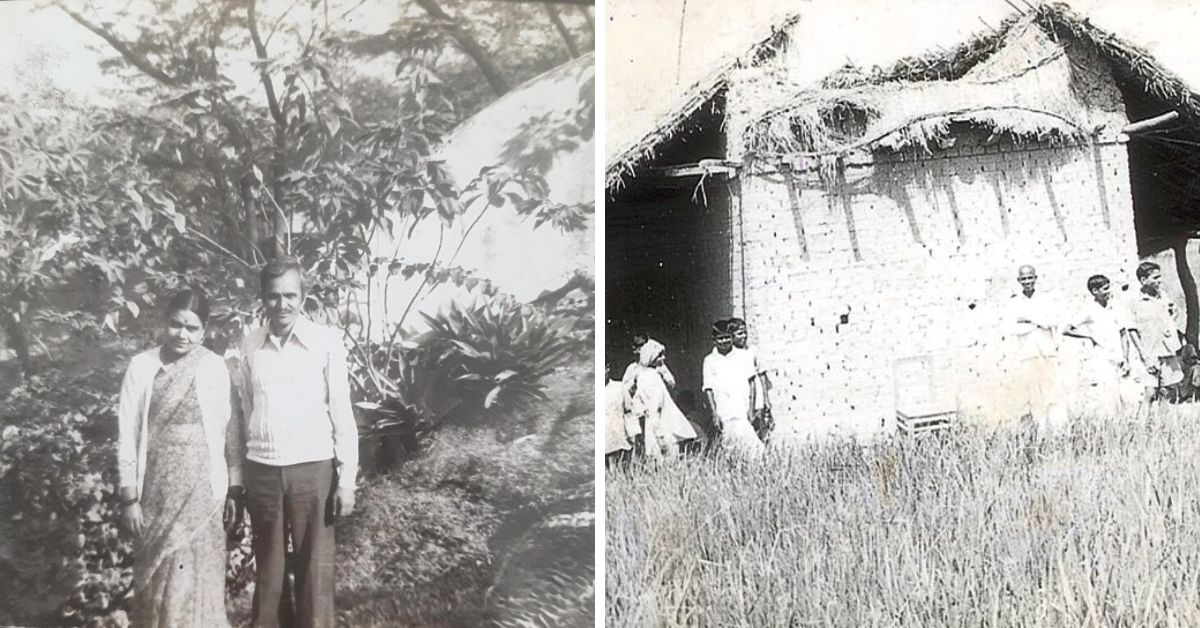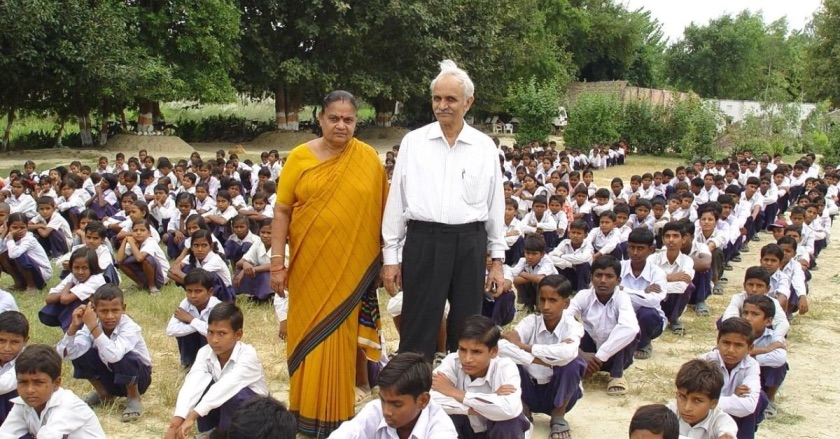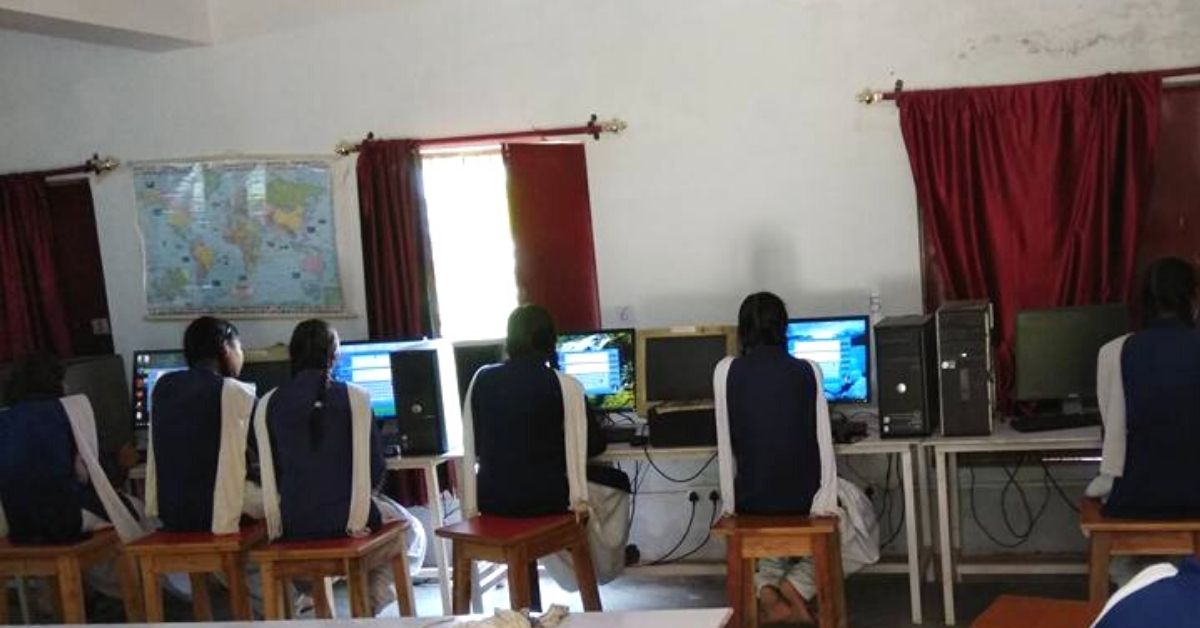Geologist Gives up Canadian Job & Life Savings to Run Free School in Rural Village
A successful scientist in Canada, Shiva Balak Misra made his life’s mission to make education accessible to children in his village Kunaura in Uttar Pradesh, thus starting the Bharatiya Gramin Vidyalaya

Shiva Balak Misra was a successful scientist living a comfortable life in Canada. At the peak of his career, he was on a scholarship at the Memorial University in Canada when the geologist discovered a 565-years-old fossil, eventually named after him – ‘Fractofusus Misrai’.
So why did he leave it all behind and come back home?
But despite the success, Shiva could never forget the hardships he underwent during his childhood days. The memories continued to prick him like a thorn in his mind.
“I belong to the village Kunaura in Uttar Pradesh and walked 12 km to school during my childhood. However, there was no secondary and higher secondary school in the village. Thus I made a 24 km commute,” Shiva tells The Better India.
Shiva says nine students from his village walked the long distance to the school. But eventually, it was only him who continued, while others dropped out. “The conditions were terrible,” he says.
He did not belong to a well-to-do family but was good at studies. So after entering class 9, Shiva moved to Lucknow to pursue secondary studies. “I started taking private tuitions for students from lower grades to meet my living expenses,” says the 83-year-old.
A life’s mission

Eventually, he struggled his way to complete a Masters degree in science and bagged a job with the Oil and Natural Gas Company (ONGC). “I started working in 1962 and worked in places like Gujarat, Dehradun and Assam. Some of my colleagues in Assam were applying for a scholarship to pursue higher studies. So I went with the flow to bag one at the Memorial University in Newfoundland, Canada,” he shares.
Shiva flew to Canada in October 1966. The following year he discovered the rare fossil from a place known as Mistaken Point near Cape Rock. “The discovery got published in popular science journals such as Nature and Geological Society of India and other prestigious American publications,” he says.
Life moved on for a few years. But he never forgot the situation back home. “There were 11 other research scholars from India, and we met weekly to socialise. On one such occasion, we all shared our concerns about the famine in India and were thinking ways in helping for the same,” he says.
A couple of weeks later, Shiva met his friends and expressed his desire to return home and start school in his hometown. “I told my friends that opening a school in the village would be my contribution to society. I did not want younger generations to face the same brunt I faced. But they were sceptical about my decision. They said I was leaving a gold mine and losing out on promising career growth,” he adds.
But the scientist had already made up his mind. “I returned to India in August 1970. First, I purchased land at the outskirts of the village bordering Deora. Then, in 1972, I married Nirmala and shared my life’s ambition with her – to start a school. She gave me her full support, and we built a small hut with a thatched roof to start the school – calling it the ‘Bharatiya Gramin Vidyalaya’,” he says.

The couple convinced the villagers to offer free education to their children. “We knew that the villagers could not afford education, and I decided to spend my life savings to support the village children’s education. We hired a couple of teachers too. But I exhausted all the savings by 1974 and struggled to meet the expenses,” he says.
Shiva came to a difficult point where there was no alternative other than to shut the school. “I saw my dream being crushed. We had twins in 1973, and so family expenses also increased suddenly. We had to think about raising children and operating the school. It seemed impossible,” he says.
Nirmala offered to take the entire responsibility of the school and suggested Shiva find a job to support the family and school.
Shiva moved places and eventually settled for a research project job at Kumaon University in Nainital. “The kids and Nirmala visited me during summer vacations while I travelled to my hometown during winter holidays. That is how we managed. All my earnings went running the school and paying the fees for a staff of three,” he says.
He adds that Nirmala also struggled to make ends meet. “She could not charge fees to students. Whereas the parents, who were mainly farmers, donated food grains. Nirmala sold them in the market to earn money,” he says.
Shiva says the school functioned without grants from the government as initially, it was more like a formal tuition centre. “We registered the school in 1975 and received a temporary recognition after meeting all the necessary criteria. Then, in 1982, we received a permanent recognition as a primary school, but the government refused to provide grants,” he adds.
The couple struggled for years and slowly increased their infrastructure to three classrooms, bringing furniture and other facilities. “Some well-wishers offered financial support,” Shiva recalls.
By the 1980s, Shiva’s children graduated and started working. “My son Neelesh helped to bring a government grant to the school,” he says.
Receiving government aid helped to reduce the financial burden on the school. The economic conditions in the village had improved over the years. “We started charging Rs 11 to some students and offered free education to those who could afford it. Even today, our fees remain at a nominal cost of Rs 200 per month. We still do not charge for the financially poor,” he explains.
An educational temple for generations
Over the years, the primary school grew into higher secondary school and now offers intermediate education in arts, commerce and science faculties. In 1998, Shiva took voluntary retirement from his job to focus on the school.
The primary school runs on government aid, while the higher grades are non-aided.
“Unfortunately, there is no count of the number of students who have studied and passed from our school, but I am sure they are in the thousands,” he says.
Citing an example, Shiva says, “Many students currently studying belong to parents who passed out from the same school. They are the third generation of students. Many ex-students work in the police department, banks and other fields.”
Speaking about the success and change the school has brought in terms of education, Shiva says, “At present, the children do not face hardships accessing education the way I did. The road is much easier for them to access education until class 10. A few schools in the vicinity have also made the situation better.”
Shiva takes pride in academically progressing with changing times. “We have introduced online classes for students, especially with the COVID-19 pandemic crisis. Moreover, the students learn life skills in sewing, computer education and other fields. A degree alone does not enable one to earn a job. The practical skills help the students stay ahead of the competition,” he says.
He says that the school has reached a stage where it is self-sustained and does not need many interventions. “My sons support my cause and assist when needed. If they wish, they can expand further into a degree college. But for now, I feel that my life mission is complete,” Shiva signs off.
Edited by Vinayak Hegde
This story made me
- 97
- 121
- 89
- 167
Tell Us More
We bring stories straight from the heart of India, to inspire millions and create a wave of impact. Our positive movement is growing bigger everyday, and we would love for you to join it.
Please contribute whatever you can, every little penny helps our team in bringing you more stories that support dreams and spread hope.



















